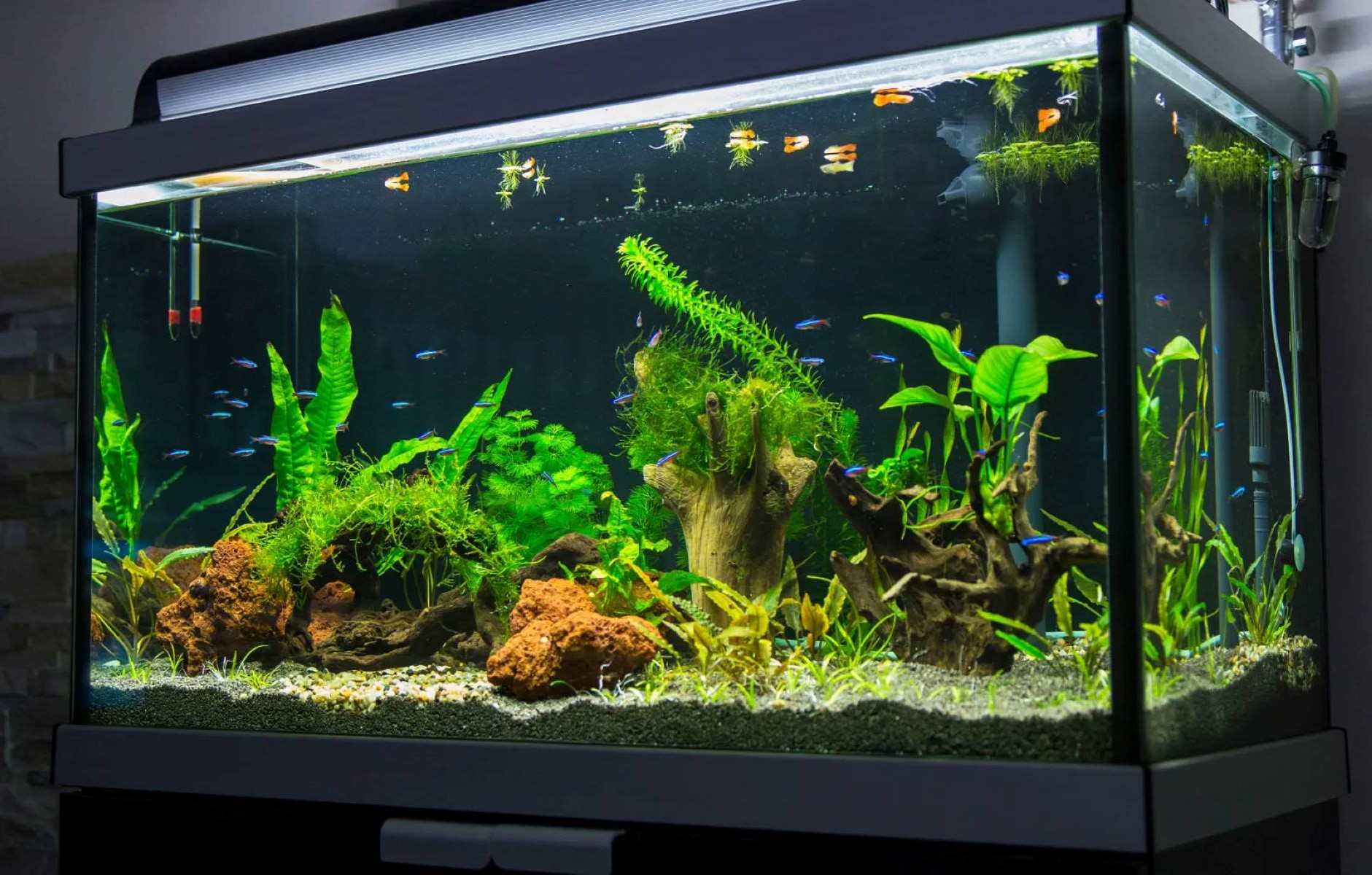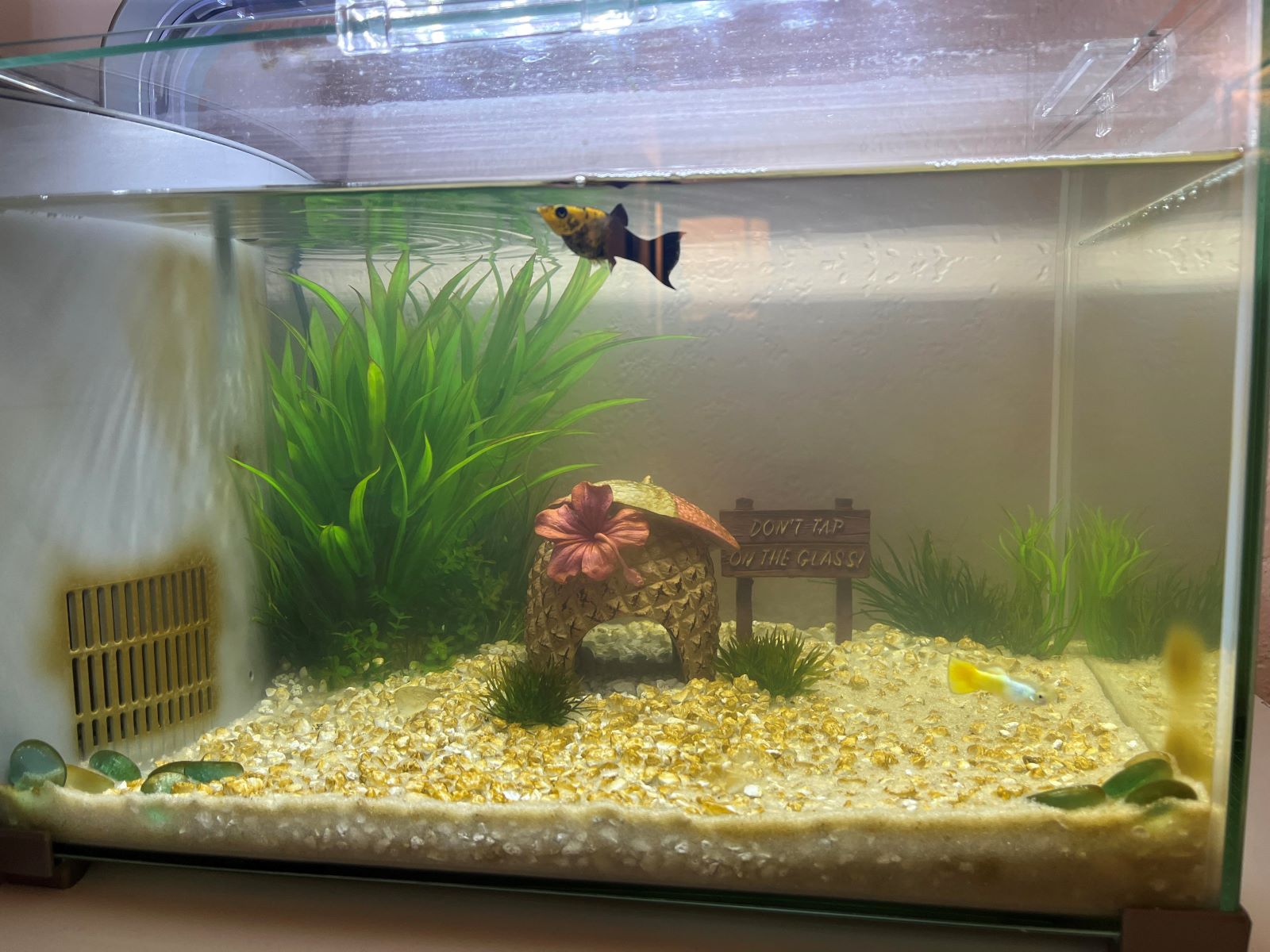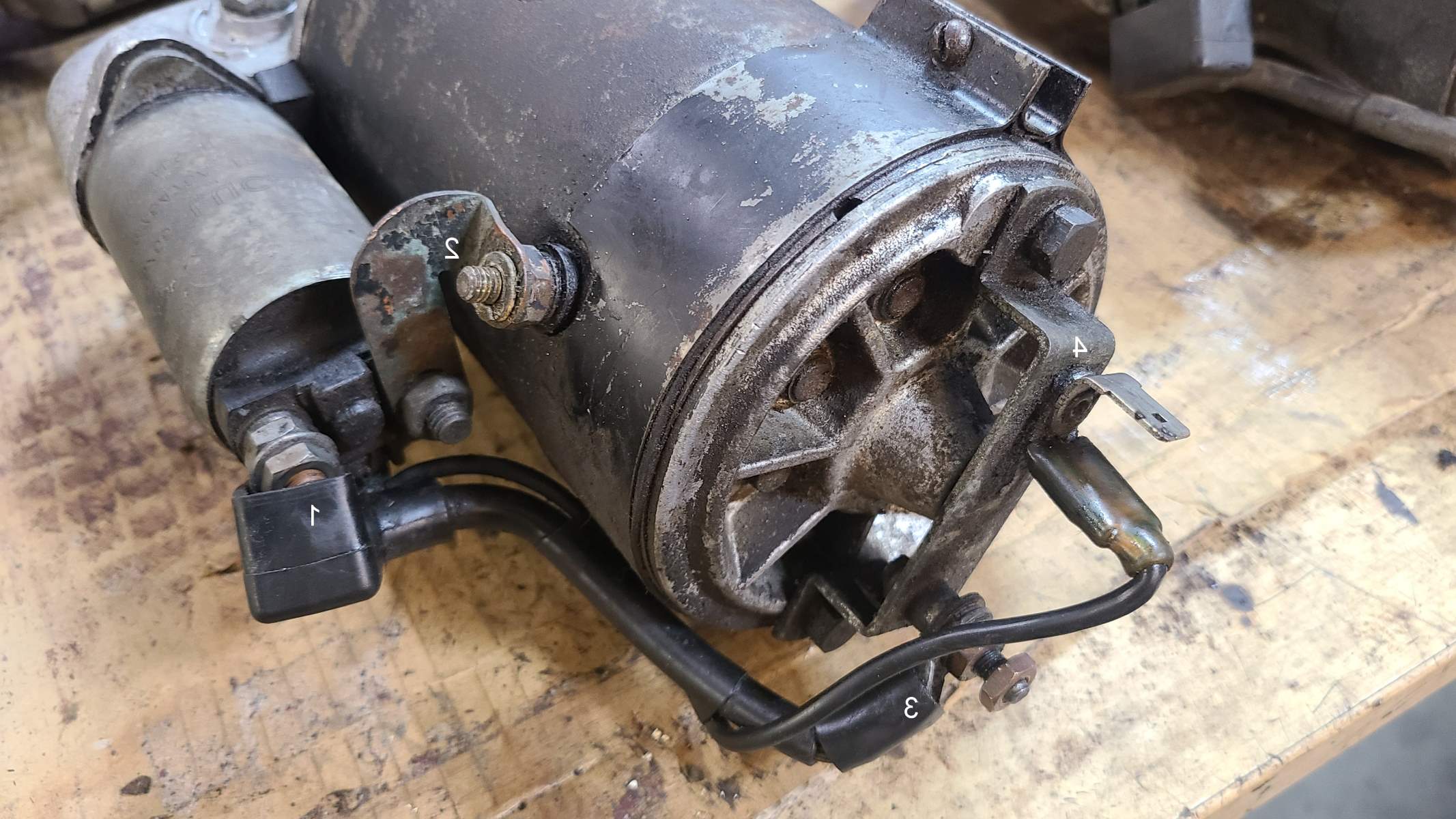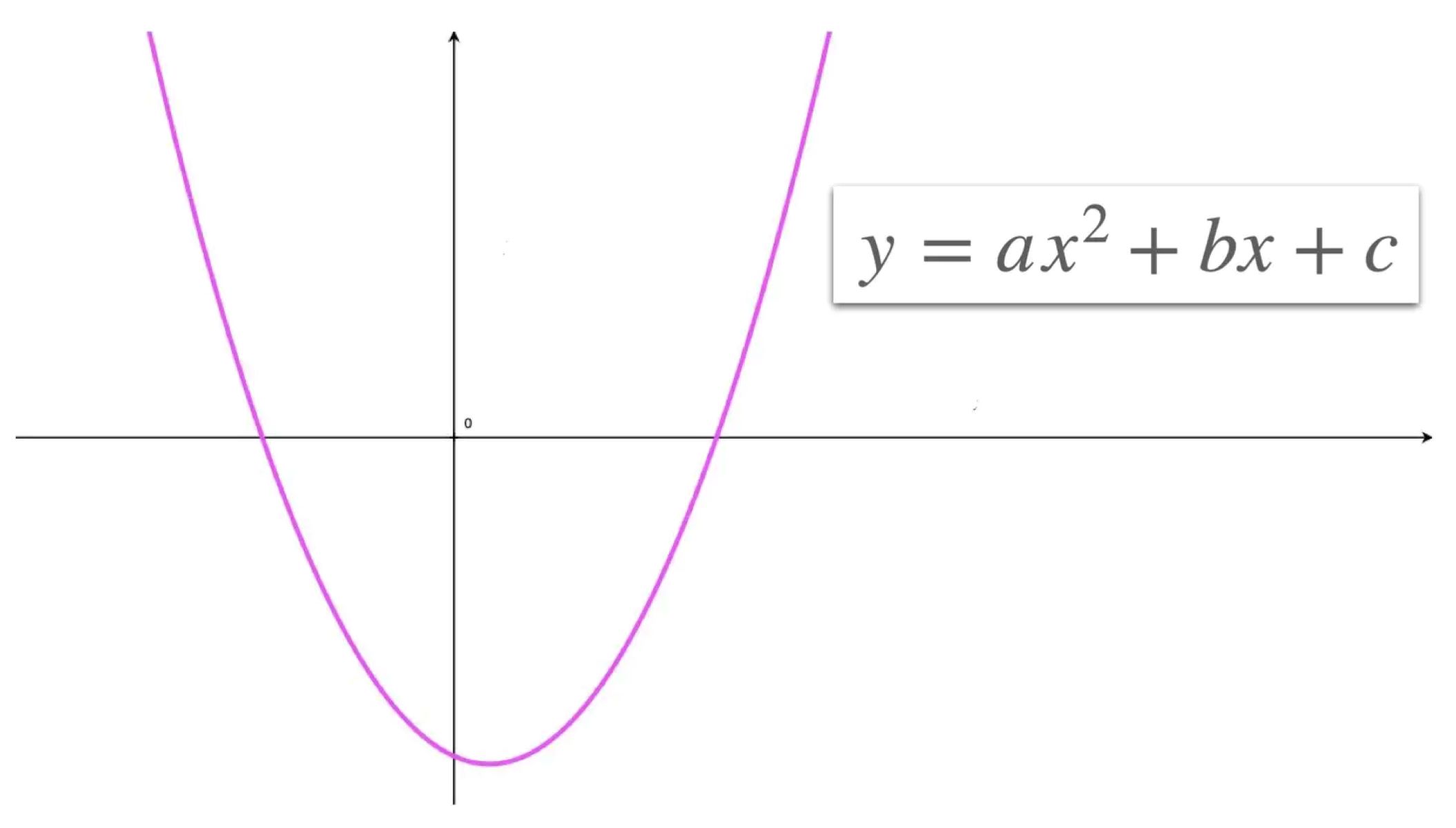Home>Home and Garden>How To Lower PH In Aquarium


Home and Garden
How To Lower PH In Aquarium
Published: February 29, 2024
Learn effective methods to lower pH in your aquarium at home and create a healthy environment for your aquatic plants and fish. Discover expert tips for maintaining the ideal pH balance in your home aquarium.
(Many of the links in this article redirect to a specific reviewed product. Your purchase of these products through affiliate links helps to generate commission for Regretless.com, at no extra cost. Learn more)
Table of Contents
Introduction
Maintaining the ideal pH level in your aquarium is crucial for the health and well-being of your aquatic pets and the overall ecosystem within the tank. The pH level indicates the acidity or alkalinity of the water, and different species of fish and plants thrive in specific pH ranges. Understanding how to manage and lower the pH in your aquarium is essential for creating a suitable environment for your aquatic inhabitants.
In this comprehensive guide, we will delve into the various methods and techniques for lowering the pH in your aquarium. Whether you are a seasoned aquarist or a beginner enthusiast, this article will equip you with the knowledge and strategies to effectively manage pH levels in your aquatic habitat.
Maintaining a balanced pH level is not only vital for the health of your fish but also for the overall stability of the aquarium ecosystem. By learning how to lower the pH in your aquarium, you can create an environment that mimics the natural habitat of your aquatic pets, promoting their well-being and enhancing their vibrant colors and natural behaviors.
Understanding the factors that influence pH levels and the methods available for pH management will empower you to make informed decisions and take proactive measures to ensure a harmonious and thriving aquatic environment. Whether you are aiming to create a specific biotope or simply striving to provide the best possible conditions for your fish and plants, the knowledge and techniques shared in this guide will serve as valuable tools in your aquarist journey.
Now, let's embark on this insightful exploration of pH management in aquariums, uncovering natural and chemical methods to lower pH, testing techniques, and the essential practices for maintaining optimal pH levels in your aquatic haven.
Understanding pH in Aquariums
The pH level in an aquarium is a crucial parameter that directly impacts the health and well-being of the aquatic inhabitants. pH is a measure of the acidity or alkalinity of the water, and it is essential for creating a suitable environment for fish, invertebrates, and plants. The pH scale ranges from 0 to 14, with 7 being neutral. A pH below 7 indicates acidity, while a pH above 7 indicates alkalinity.
Different species of fish and plants have specific pH requirements to thrive. For instance, freshwater fish from the Amazon basin, such as angelfish and neon tetras, prefer slightly acidic water with a pH range of 6.0 to 6.5. On the other hand, African cichlids thrive in alkaline water with a pH range of 7.8 to 8.5. Therefore, understanding the preferred pH range of your aquatic pets is essential for creating an environment that mimics their natural habitat.
pH levels can fluctuate due to various factors, including biological processes, the presence of decaying organic matter, and the buffering capacity of the water. It's important to monitor and maintain stable pH levels to prevent stress and health issues in fish and other aquatic organisms.
In addition to its direct impact on aquatic life, pH also influences the effectiveness of biological and chemical processes within the aquarium. For example, the nitrification process, which involves the conversion of toxic ammonia to less harmful nitrate, is pH-dependent. Maintaining the appropriate pH level ensures the efficiency of essential biological processes that contribute to the overall health of the aquarium ecosystem.
Understanding the dynamics of pH in aquariums involves recognizing the interconnectedness of water parameters. pH interacts with other water parameters such as temperature, hardness, and dissolved oxygen, collectively influencing the overall aquatic environment. By comprehending the intricate relationship between pH and these parameters, aquarists can make informed decisions to create and maintain a balanced and thriving aquatic habitat.
In the next sections, we will explore methods for testing pH levels, natural approaches to lower pH, chemical interventions, and the best practices for maintaining optimal pH levels in your aquarium. This comprehensive understanding of pH management will empower aquarists to cultivate a harmonious and healthy aquatic ecosystem that supports the well-being of its inhabitants.
Testing pH Levels
Testing the pH level of your aquarium water is a fundamental aspect of maintaining a healthy aquatic environment. Regular pH testing allows aquarists to monitor the acidity or alkalinity of the water, enabling them to make informed decisions regarding the necessary adjustments to create an optimal habitat for fish, invertebrates, and plants.
There are various methods available for testing pH levels in aquariums, ranging from simple test kits to advanced electronic pH meters. Test kits typically include liquid reagents or test strips that change color based on the pH of the water. These color changes are then compared to a color chart to determine the pH level. While test kits are affordable and widely used, they may have limitations in terms of accuracy and precision.
For aquarists seeking more precise pH measurements, electronic pH meters offer a reliable solution. These devices provide digital readouts of the pH level, offering greater accuracy and consistency compared to traditional test kits. Electronic pH meters are particularly beneficial for advanced aquarists and those maintaining sensitive aquatic species with specific pH requirements.
Regardless of the testing method chosen, it is essential to perform pH tests regularly, especially in newly established aquariums and those undergoing significant changes. Monitoring pH levels at different times of the day can also provide valuable insights into any fluctuations that may occur due to biological activities, such as respiration and waste production by aquatic inhabitants.
In addition to routine pH testing, it is advisable to keep a record of pH measurements over time. This historical data can reveal trends and patterns, helping aquarists identify any long-term shifts in pH and enabling them to take proactive measures to maintain stable and suitable pH levels for their aquatic pets.
By diligently testing and monitoring pH levels, aquarists can gain a deeper understanding of the dynamics of their aquarium's water chemistry, empowering them to make informed decisions regarding pH adjustments and overall habitat management. This proactive approach to pH testing forms the foundation for creating and sustaining a thriving aquatic ecosystem that promotes the health and vitality of its inhabitants.
Natural Ways to Lower pH
Maintaining the ideal pH level in your aquarium is essential for the health and well-being of your aquatic pets. When it comes to lowering the pH in your aquarium, natural methods offer sustainable and environmentally friendly solutions. These methods can be particularly beneficial for aquarists who prefer to avoid the use of chemical additives and strive to create a more natural aquatic environment for their fish and plants.
1. Peat Moss
Peat moss is a natural, organic material that can effectively lower the pH of aquarium water. When placed in the aquarium filter or substrate, peat moss releases tannins and humic acids, which have natural acidic properties. These compounds gradually lower the pH, creating a more suitable environment for fish species that thrive in slightly acidic water. Additionally, peat moss can impart a natural tint to the water, simulating the conditions found in the habitats of many tropical fish species.
Read more: How To Lower High Hematocrit Levels
2. Driftwood
Adding driftwood to the aquarium can contribute to lowering the pH over time. Driftwood releases tannins and other organic compounds into the water, creating a mild acidic effect. This natural process not only helps lower the pH but also enhances the aesthetic appeal of the aquarium, providing a more natural and visually captivating environment for its inhabitants.
3. Indian Almond Leaves
Indian almond leaves, also known as catappa leaves, are widely recognized for their natural pH-lowering properties. When placed in the aquarium, these leaves release tannins and other beneficial compounds, gradually reducing the pH while creating a natural environment reminiscent of tropical water bodies. Additionally, Indian almond leaves offer antimicrobial benefits and can serve as a supplementary food source for certain species of fish and invertebrates.
4. Rainwater
Collecting and using rainwater in the aquarium can be an effective way to lower pH naturally. Rainwater tends to be slightly acidic due to the absorption of carbon dioxide from the atmosphere. When properly collected and filtered, rainwater can be utilized to dilute the alkalinity of the aquarium water, thereby lowering the overall pH and creating a more favorable environment for acid-loving aquatic species.
5. Carbon Dioxide Injection
Introducing carbon dioxide (CO2) into the aquarium can lower the pH by creating a mild acidic effect. This method is commonly used in planted aquariums where CO2 injection is employed to promote healthy plant growth. The presence of CO2 not only benefits aquatic plants but also contributes to lowering the pH, making it a natural and effective approach for pH management.
By incorporating these natural methods, aquarists can effectively lower the pH in their aquariums while promoting a more sustainable and ecologically balanced aquatic environment. These natural approaches offer a harmonious way to create optimal conditions for fish, invertebrates, and plants, aligning with the principles of responsible aquarium keeping and environmental stewardship.
Read more: Top 5 Fish For Your 3-Gallon Tank!
Chemical Methods to Lower pH
In certain situations, natural methods may not achieve the desired reduction in pH levels, prompting the consideration of chemical interventions to effectively lower the pH in the aquarium. It is important to approach chemical methods with caution and precision, as improper use of chemicals can have adverse effects on aquatic life. When employing chemical methods to lower pH, aquarists should prioritize the safety and well-being of their aquatic inhabitants.
1. pH-Adjusting Solutions
pH-adjusting solutions, such as commercially available pH decreasers, offer a convenient and controlled approach to lowering the pH in the aquarium. These solutions typically contain acidic compounds, such as phosphoric acid or citric acid, which effectively reduce the alkalinity of the water, leading to a decrease in pH. It is crucial to follow the manufacturer's instructions meticulously and to gradually adjust the pH to avoid sudden fluctuations that may stress the aquatic inhabitants.
2. Reverse Osmosis (RO) Water
Utilizing reverse osmosis water, which has a neutral pH, can be an effective method for lowering the overall pH of the aquarium water. By blending reverse osmosis water with the existing aquarium water, aquarists can dilute the alkalinity, subsequently lowering the pH to the desired level. This method allows for precise control over the pH adjustment and is particularly beneficial for aquarists maintaining sensitive species with specific pH requirements.
3. Carbon Dioxide (CO2) Reactors
Carbon dioxide (CO2) reactors, commonly utilized in planted aquariums to promote lush plant growth, can also contribute to lowering the pH. As carbon dioxide dissolves in water, it forms carbonic acid, leading to a reduction in pH. Aquarists can regulate the CO2 injection to achieve the targeted pH level while ensuring that the aquatic inhabitants, particularly fish, are not subjected to abrupt pH changes that may compromise their well-being.
4. Acid Buffers
Acid buffers, formulated to stabilize and lower pH, can be employed to maintain the desired acidic conditions in the aquarium. These buffers contain compounds that resist changes in pH, effectively counteracting the alkalinity of the water. It is essential to carefully measure and dose acid buffers according to the specific requirements of the aquarium, taking into account the buffering capacity of the water to prevent drastic pH fluctuations.
When considering chemical methods to lower pH, aquarists should prioritize the gradual adjustment of pH levels to minimize stress on the aquatic inhabitants. Regular monitoring and testing of pH following the implementation of chemical interventions are imperative to ensure that the desired pH range is achieved and maintained. Additionally, thorough research and consultation with experienced aquarists or professionals can provide valuable insights into the safe and effective use of chemical methods for pH management in the aquarium.
By approaching chemical methods with diligence and a commitment to the well-being of the aquatic ecosystem, aquarists can leverage these interventions to create and maintain optimal pH conditions, fostering a thriving and harmonious environment for their fish, invertebrates, and plants.
Maintaining pH Levels
Maintaining the pH level in an aquarium is an ongoing process that requires vigilance and proactive management to ensure a stable and suitable environment for aquatic life. Once the desired pH range has been achieved through natural or chemical interventions, it is essential to implement practices that support the long-term maintenance of optimal pH levels.
Regular monitoring of pH is a fundamental aspect of maintaining pH levels in the aquarium. By conducting frequent pH tests using reliable testing methods, aquarists can promptly identify any fluctuations or deviations from the target pH range. This proactive approach enables timely adjustments and interventions to prevent significant pH shifts that may stress or endanger the aquatic inhabitants.
In addition to pH testing, maintaining consistent water parameters, such as temperature and alkalinity, contributes to the stability of pH levels. Fluctuations in these parameters can influence pH, emphasizing the interconnected nature of water chemistry in the aquarium. By upholding stable water conditions, aquarists can mitigate the risk of pH fluctuations and create a more predictable and harmonious environment for their aquatic pets.
Regular water changes play a vital role in pH maintenance. Partial water changes help dilute any accumulating acids or bases in the aquarium, contributing to the overall stability of pH levels. When performing water changes, it is crucial to use properly conditioned water that aligns with the desired pH range, ensuring that the new water introduced into the aquarium does not cause abrupt pH shifts.
The presence of natural buffers, such as substrate materials and aquatic plants, can aid in maintaining stable pH levels. These buffers help resist drastic changes in pH, providing a degree of natural stability within the aquarium. Aquarists can strategically select substrate materials and incorporate live plants that contribute to the buffering capacity of the water, supporting the long-term maintenance of the desired pH range.
Furthermore, maintaining a well-balanced and established biological filtration system is essential for pH stability. The nitrification process, which converts ammonia to nitrite and then to nitrate, is pH-dependent. A stable and efficient biological filtration system supports the maintenance of optimal pH levels by facilitating the removal of harmful substances and promoting a healthy aquatic ecosystem.
By implementing these practices and remaining attentive to the dynamics of the aquarium environment, aquarists can effectively maintain stable and suitable pH levels for their aquatic inhabitants. This proactive and holistic approach to pH maintenance fosters a thriving and resilient aquatic ecosystem, promoting the health, vibrancy, and natural behaviors of the fish, invertebrates, and plants within the aquarium.
Conclusion
In conclusion, the management of pH levels in aquariums is a fundamental aspect of responsible aquarist practices, directly impacting the health and well-being of fish, invertebrates, and plants. Throughout this comprehensive guide, we have explored the intricacies of pH management, encompassing the understanding of pH dynamics, testing techniques, natural and chemical methods to lower pH, and the essential practices for maintaining optimal pH levels in aquariums.
Understanding the specific pH requirements of aquatic species is paramount, as it enables aquarists to create environments that closely resemble the natural habitats of their fish and plants. By recognizing the interconnectedness of pH with other water parameters, such as temperature and alkalinity, aquarists can make informed decisions to maintain stable and suitable pH levels, fostering a harmonious and thriving aquatic ecosystem.
The utilization of natural methods to lower pH, including the use of peat moss, driftwood, Indian almond leaves, rainwater, and carbon dioxide injection, offers sustainable and environmentally friendly solutions. These natural approaches not only contribute to pH management but also enhance the aesthetic appeal of the aquarium, creating visually captivating environments for aquatic inhabitants.
In instances where natural methods may not achieve the desired pH reduction, the cautious consideration of chemical interventions becomes essential. pH-adjusting solutions, reverse osmosis water, carbon dioxide reactors, and acid buffers provide controlled approaches to lowering pH, requiring meticulous attention to ensure the safety and well-being of the aquatic ecosystem.
Furthermore, the maintenance of stable pH levels through regular monitoring, consistent water parameters, partial water changes, natural buffers, and a well-established biological filtration system is crucial for sustaining a balanced and thriving aquatic environment. By implementing these practices, aquarists can create optimal conditions that support the health, vibrancy, and natural behaviors of their aquatic pets.
Ultimately, the proactive and holistic approach to pH management in aquariums aligns with the principles of responsible aquarium keeping and environmental stewardship. By cultivating environments that prioritize the well-being of aquatic inhabitants and emulate their natural habitats, aquarists contribute to the preservation and appreciation of the captivating world beneath the water's surface.
In embracing the knowledge and techniques shared in this guide, aquarists are empowered to embark on a journey of creating and maintaining thriving aquatic ecosystems, where the delicate balance of pH harmonizes with the vibrancy of aquatic life, enriching the experiences of both aquarists and their captivating underwater companions.












